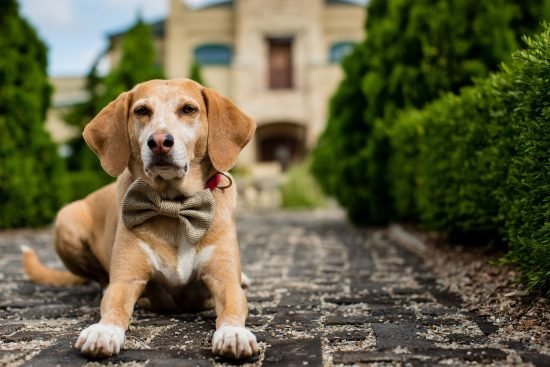
No animal will voluntarily and consciously starve. If a dog refuses food, something is wrong. A caring owner is ready to restore the pet’s appetite to a healthy one. However, experts recommend first finding out the cause of the “hunger strike” and only then restoring the food instinct. Next, we will consider the main factors that negatively affect the appetite of your four-legged friend, and we will analyze the most common methods of normalizing it.
Why doesn’t the dog eat anything?
Conventionally, the reasons for a dog’s refusal to eat can be divided into two groups: unrelated and related to health problems.
Factors that are not related to the physical condition of the pet:
- Stress – the absence of the owner, the appearance of a new four-legged tenant, moving, visiting a clinic, grooming;
- Excessive physical activity, fatigue;
- Lack of physical activity;
- High air temperature, especially over a long period;
- Improper food intake – excess food, snacks, food “from the table,” sudden change in the type and type of food;
- Exacerbation of sexual instinct;
- Old age of the pet.
If none of the above reasons apply, your pet is likely sick, which is apparent when, in addition to the refusal to eat, there are other symptoms of pathologies. However, in some cases, they may not be present at the initial stage of disease development.
The pet may be bothered by parasites and problems with teeth, the gastrointestinal tract, and the endocrine system. Loss of appetite may be associated with poisoning, ingestion of a foreign object, cancer, or heart pathologies. To prevent complications, you should not postpone visiting the clinic.
If the pet does not eat but drinks
When a dog does not eat but does not refuse water, the reasons may be heat, dental problems, or overeating the day before. Particular attention should be paid in case of increased thirst, which is often a sign of diabetes, liver or kidney failure, or inflammation of the uterus (pyometra).
Sometimes, pets are cunning, refusing regular food to get something tasty, which happens if the owner often pampers his tailed friend or gives too many treats in the hope of “awakening” his appetite.

The dog doesn’t eat or drink.
Refusal of food and water is a clear sign of illness. In this case, the animal must be taken to a veterinary clinic as soon as possible and diagnosed. Lack of fluid, especially with high fever, vomiting, and diarrhea, can cause dehydration and death of the pet.
The dog eats only grass, refusing food.
Most veterinarians consider dogs eating grass beneficial, which does not always indicate pathology. Some pets love the taste of fresh greens, while others may eat them instinctively, feeling the need for fiber or some vitamins. Sometimes, in this way, the animal “cleanses” the stomach, causing vomiting, for example, after eating a large amount of fatty food or bones.
If the puppy doesn’t eat
In puppyhood, refusal to eat with helminthiasis or infectious diseases. In addition, curious puppies may accidentally swallow something inedible or harmful. Unlike adult animals, babies cannot go without food for a long time. If a small pet does not eat within 10-12 hours, it must be taken to a veterinarian immediately.
How to restore your dog’s appetite
If your pet has no health problems, you can restore your former appetite in several ways. You will achieve more significant effects if you use them in combination.
Eliminate “handouts” from the table.
When a pet chooses between eating its food (already in the bowl) or a cutlet from the owner’s table, it will prefer the second option. The bowl of food will remain whole. When a dog eats human food, begging becomes the norm. The animal ignores its bowl but waits for the owner to sit at the table.
Reduce your daily food intake.
Two points are important here. The first is to eliminate snacking. Small pieces that you give between main meals dull the feeling of hunger in your pet.
The second point is to reduce the volume of a single serving, mainly if the dog only eats some things. Please walk away from the bowl, feeling hungry. By force of instinct, the animal eats until it feels complete, and since four-legged friends absorb food very quickly, leaving food means overeating.

Keep an eye on your dog’s bowl.
The dog’s plate should only be when eating—the rest of the time, empty or wholly removed from the animal’s field of view. It would be best to deprive your pet of the opportunity to have a snack whenever he wants.
Feed your dog according to the schedule.
Decide on an approximate feeding time for your four-legged friend and follow it strictly. Minor deviations in the “schedule” are acceptable but should not become the norm. Gradually, by a specific time, the pet will trigger reactions associated with the desire to eat, leading to an excellent appetite and better digestion.
Make food tempting and enjoyable.
Dogs love tasty food, too. To stimulate appetite, you can add meat broth, canned dog food with some flavor, or food for people that will not harm the animal to your usual food. Some pet stores sell unique dog sauces, the addition of which changes the taste of the food.
Increase your pet’s physical activity.
Physical activity, especially in the fresh air, is the best way to increase appetite. In this case, the load should correspond to the pet’s age and characteristics before feeding. Food taken after an active walk is absorbed much better.
Replace the bowl
Plastic feeding utensils develop an unpleasant odor over time. Try changing the bowl to a new one made from high-quality, food-grade plastic. By the way, some pets may react to the color and material of the bowl. For example, a dog calmly ate from a metal bowl for several years, but one day, the bowl moved from its place, hit something, and rattled. From surprise, the dog may become terrified and no longer approach this dish.

Change your environment
Noise in the apartment, from neighbors, on the landing, or the street can “discourage” your dog’s appetite. The pet will refuse to eat if there is constant movement, loud conversations, and other “disturbances” nearby. Of course, this applies to animals accustomed to certain living conditions. If your pet is highly sensitive or fearful, provide him with a quiet place to eat.
Create “competition”
You can artificially create competition conditions if animals are still in the house. Dogs have a highly developed possessive instinct – they rarely give their piece to their “rival,” even if he is lying there. The presence of a “food” enemy can become an impetus for eating food. It is essential to keep the situation under control to prevent conflict. By the way, some dogs reasonably react to a soft toy for such purposes as a rival.
Give your pet a piece of salty food.
Salt stimulates the secretion of gastric juice, so it is permissible to give the dog a little salted meat or fish a quarter of an hour before feeding. Although the method is effective, it is because an excess of salt can cause illnesses in numerous bodily systems.

Change the way you feed
Food may be on the floor rather than in a dish, which piques one’s interest and stimulates one’s hunger. Raising the bowl is another possibility to consider while feeding your dog. Because it’s inconvenient, you might have missed that your pet has grown and stopped eating.
Drugs and supplements to increase appetite in dogs
Suppose a situation where a dog does not eat occurs frequently, or the refusal to eat is associated with a period of stress or illness. In that case, it is permissible to resort to the help of particular medications. Appetite stimulants can be natural, synthetic, or combined. They are in the form of injections, tablets, capsules, and drops. Some require direct ingestion by the animal, while others can and should water or feed.
As supplements, experts recommend vitamin-mineral complexes, infusions, and decoctions of herbs, for example, wormwood and food mixtures specially designed for picky pets. Among the severe medications that increase a dog’s appetite are capromorelin, mirtazapine, propofol, and glucocorticosteroids. As a rule, they are in the form of injections, so independent use is excluded. Before using any drug, consult a veterinarian, as it is necessary to consider contraindications, preliminary dosage calculation, and administration duration.














